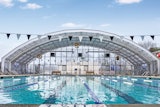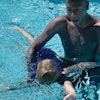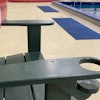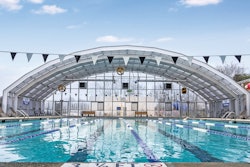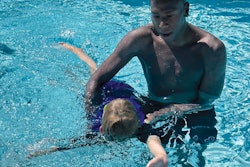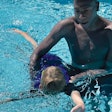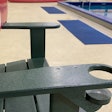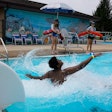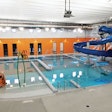Can new drowning-prevention technologies save more lives?

As the U.S. population ages, recreation managers are finding a record number of retirees running, lifting weights and swimming laps in their facilities. Men and women are exercising well into old age, and often push themselves as hard as they ever did when younger. But such practices, while beneficial from a health standpoint, leave aquatic facility operators with a paradoxical problem - how to promote fitness and longevity through swimming, while at the same time guarding against potentially expensive legal consequences in the event of a swimmer's injury or death in their pools.
Worse still from a liability standpoint, coroners investigating a pool-related fatality often find the cause of death to be drowning - even if the real cause was a heart attack or stroke that merely initiated or hastened the drowning. As a result, hundreds of thousands of dollars are paid to plaintiffs' families when facility operators are not, in fact, at fault.
A recent near-drowning incident in Germany underscores just how such a situation might unfold for a recreation manager in the United States. The incident occurred after a 77-year-old man suffered a heart attack during his regular swim session and quickly sank to the bottom of the pool's deep end. Fortunately, the pool was equipped with a computer-aided drowning detection system, which 10 seconds into the incident sounded an alarm. A lifeguard immediately pulled the victim from the water, and the man was quickly transferred to a hospital.
Is the standard of care changing in public aquatic facilities? As an employee of the first university in North America to install Poseidon Technologies' proprietary drowning detection system, I believe that if it hasn't yet, it will soon. At the very least, the man's dramatic rescue (the system's second save) points out the serious drawbacks of the current standard of care.
If faced with a lawsuit in a case similar to the one that unfolded in Germany, experts would argue about what really caused the injury or death, and attempt to focus on the timeline, beginning with the first moment that the swimmer got into trouble - or the first moment that the lifeguard realized there was trouble. In a recent U.S. case, a man in his thirties drowned while swimming laps at a public pool. With no evidence of objectively recorded elapsed time underwater, the result was a verdict against the facility, and compensation to the victim's family well above the average $500,000 verdict for such cases. Had a computer-aided drowning detection system been in place, the actual timeline would have been well documented and retrievable, instead of subject to highly speculative estimates.
Drowning cases often uncover a huge delay in detection. Psychological studies examining perception show that people miss events occurring right before their eyes because they aren't expected. With no experience of what a drowning looks like, a lifeguard might not realize that there is a body at the bottom of the pool. Plus, with turbulence on the surface of the water, reflection and refraction make it difficult for lifeguards to see below the surface, leading to further delays in detection.
The fact is that although new practices have helped make lifeguards more vigilant than ever, lifeguards are still only human, and people continue to drown regularly in guarded swimming pools. With increasing numbers of elderly swimmers watched by young, easily distracted lifeguards, the number of incidents is sure to rise - and the legal and financial burdens on recreation managers are sure to increase. Unless, of course, pool operators investigate new technologies that, it would appear, can help.









